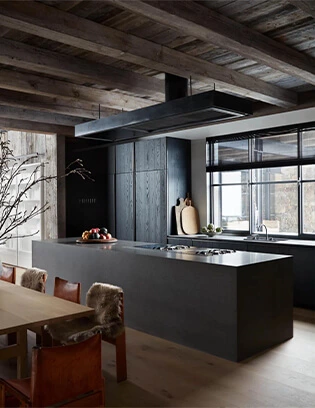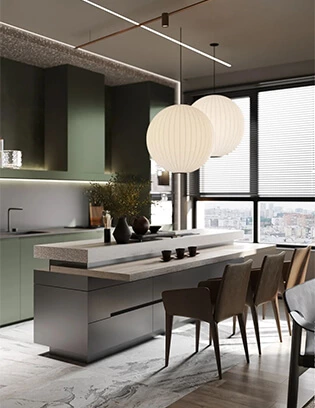8 Kitchen Island Ideas Designers Can’t Stop Talking About
There was a time when the kitchen island was just... a rectangle. A place to chop, stir, and maybe drop your keys at the end of the day. But somewhere along the way, it became so much more—the heart of the home, the anchor for everything from Sunday pancakes to late-night emails. Today’s islands are sculptural, social, and surprisingly versatile. They organize the chaos of everyday life, connect open spaces, and bring warmth and rhythm to even the most minimal kitchens.
We spoke with designers and looked through hundreds of kitchens, and one thing became clear: a well-designed island isn’t just a feature—it’s a philosophy. Here are eight ways it’s being reimagined right now.
Double Up
Who says one island is enough? In larger kitchens, a pair of islands can redefine the rhythm of the entire space. Designers often use one as a working island—complete with prep sink, butcher block, and storage for cookware—while the second takes on the social role, hosting casual meals or wine nights. The two zones allow the cook to stay in the flow while family and guests can linger nearby without getting in the way. It’s the ultimate combination of beauty and utility: sleek symmetry that still feels effortless, like the kitchen just naturally grew that way.
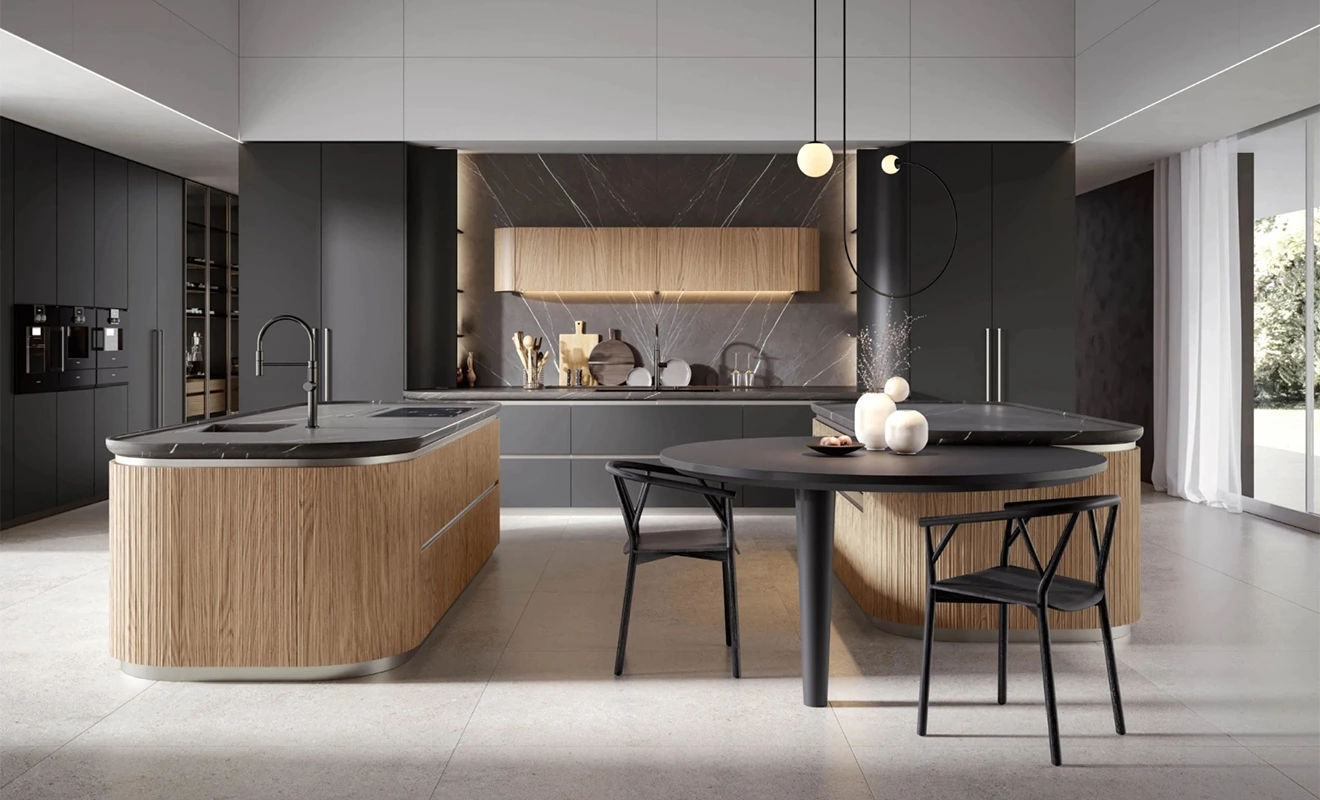
Add a Dining Drop-Down
A lowered dining extension turns a hardworking island into a welcoming social hub. By blending materials—say, a solid oak tabletop attached to a quartz worktop—you create a subtle transition from task to leisure. This shift in height invites family to linger, making the island the most natural gathering spot in the house. It’s a clever, space-saving way to fold dining into the rhythm of daily life, especially in open-plan homes where boundaries between cooking and living are beautifully blurred.

Wrap It in Warm Wood
There’s something irresistible about an island wrapped in wood—it softens the architecture and adds a tactile warmth that stone alone can’t deliver. Vertical oak slats, fluted walnut panels, or softly grained veneers bring organic texture to sleek contemporary kitchens. The look feels grounded and timeless, yet entirely modern. It’s a move that transforms the island from pure utility to statement furniture—something that feels crafted, not built.
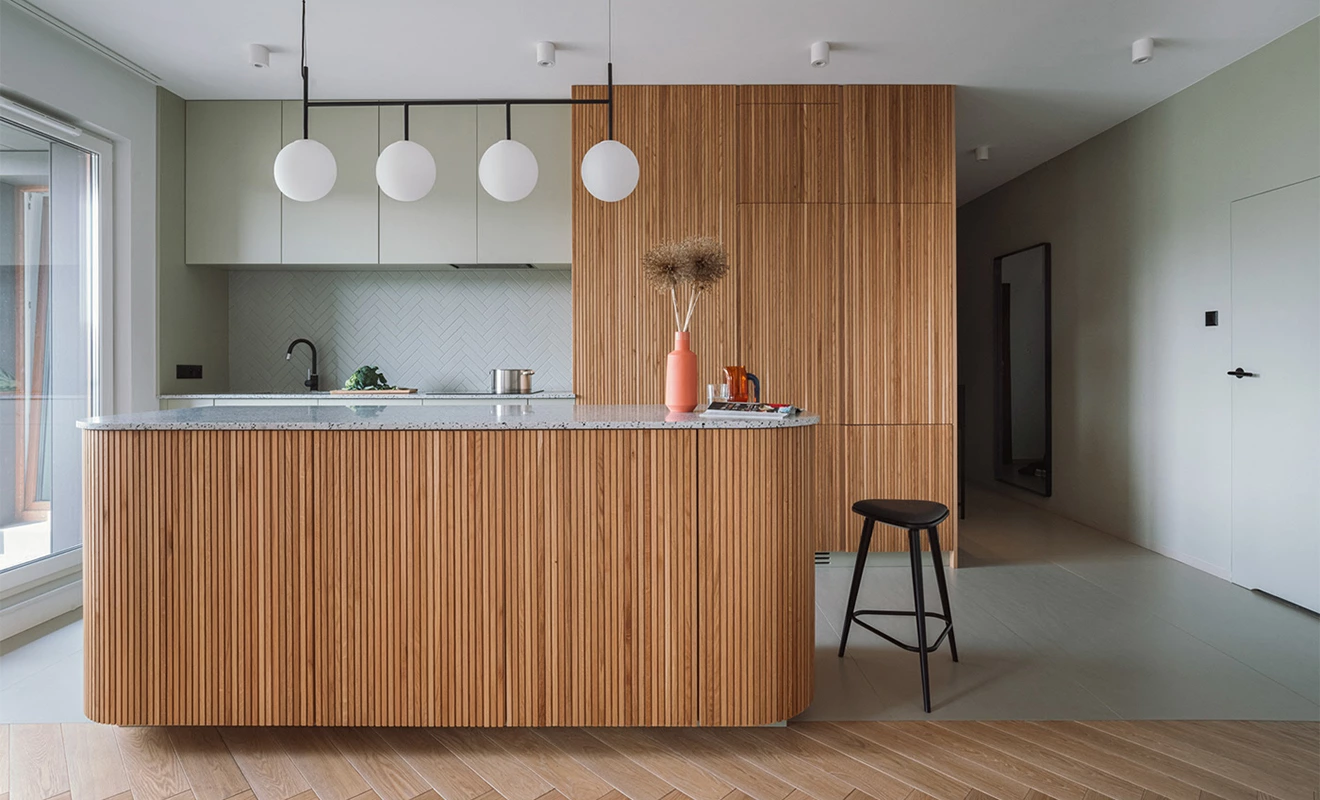
Go for Hidden Storage
Nothing elevates a kitchen faster than the feeling of calm, and smart storage is how you get there. Today’s best island designs hide everything from appliances to power outlets, with deep drawers, pull-out pantries, and integrated charging stations. Even waste bins disappear into seamless cabinetry. The magic lies in what you don’t see: clean lines, clear surfaces, and a space that always feels ready for the next meal or gathering. Behind the calm exterior lies an organized heart that makes daily life effortless.

Sculptural Lighting Above
Lighting is the finishing touch that gives an island its personality. Think of it as the kitchen’s jewelry: practical, but with just the right amount of sparkle. Whether you opt for a trio of pendants, a sculptural linear bar, or a bold single statement piece, the right fixture turns the island into the stage of the kitchen. Good lighting adds not only function but drama—illuminating the workspace when you need focus, and casting a soft, flattering glow when it’s time to unwind.
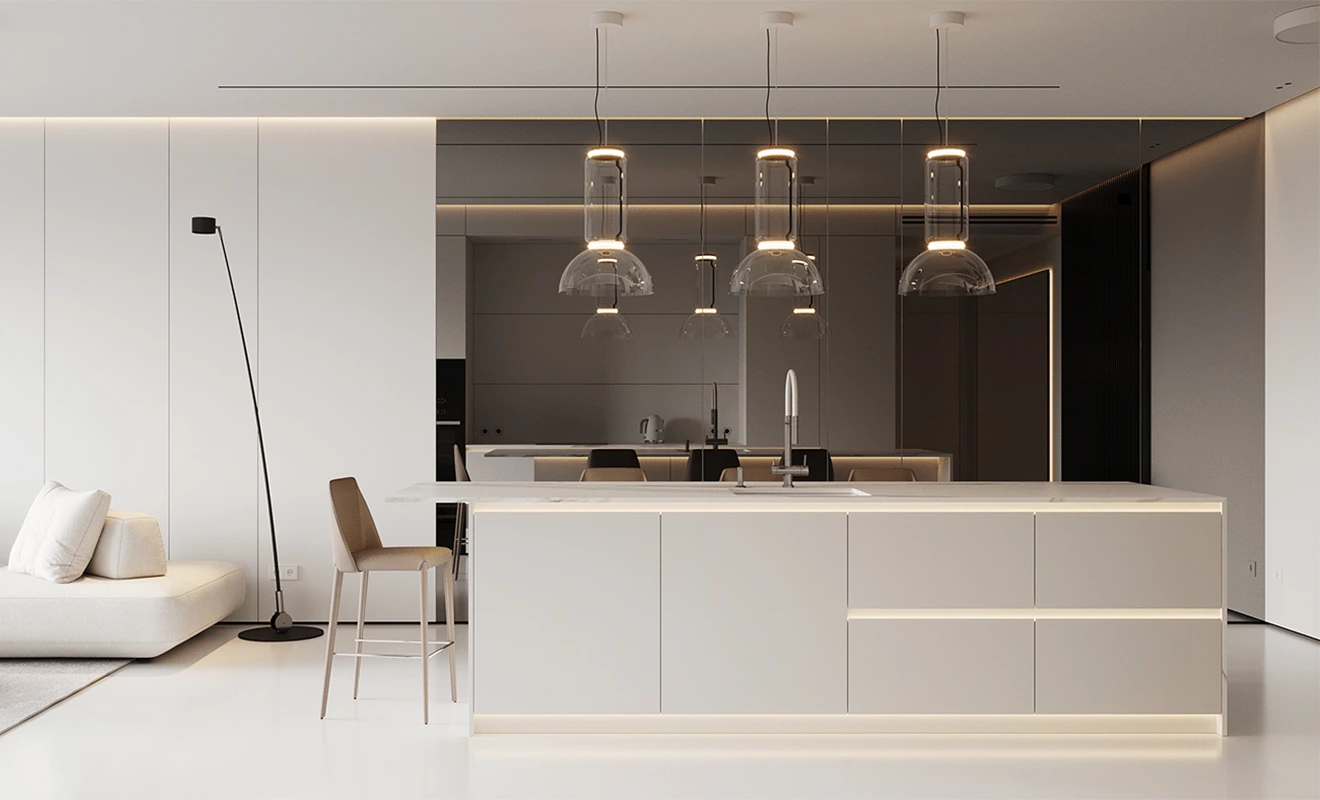
Mix Materials
A modern island thrives on contrast. Pair honed marble with fluted wood, or mix matte lacquer cabinetry with metal details for a play of texture and tone. The best combinations are subtle—cohesive but full of quiet tension. A thin shadow reveal or brass trim can elevate the junction between materials, making every seam feel deliberate. This approach doesn’t shout for attention; it whispers sophistication and gives the entire kitchen depth and character.

A Bold Splash of Color
Sometimes, the easiest way to make a kitchen feel personal is with color, and the island is the perfect place to start. A deep navy, olive green, or even cinnamon terracotta can ground the space while keeping the rest of the palette calm. Painted in a rich, tactile finish, the island becomes a standalone statement—like a freestanding piece of furniture that ties the whole room together. Add warm brass handles or pale stone on top, and the effect is confident yet inviting.
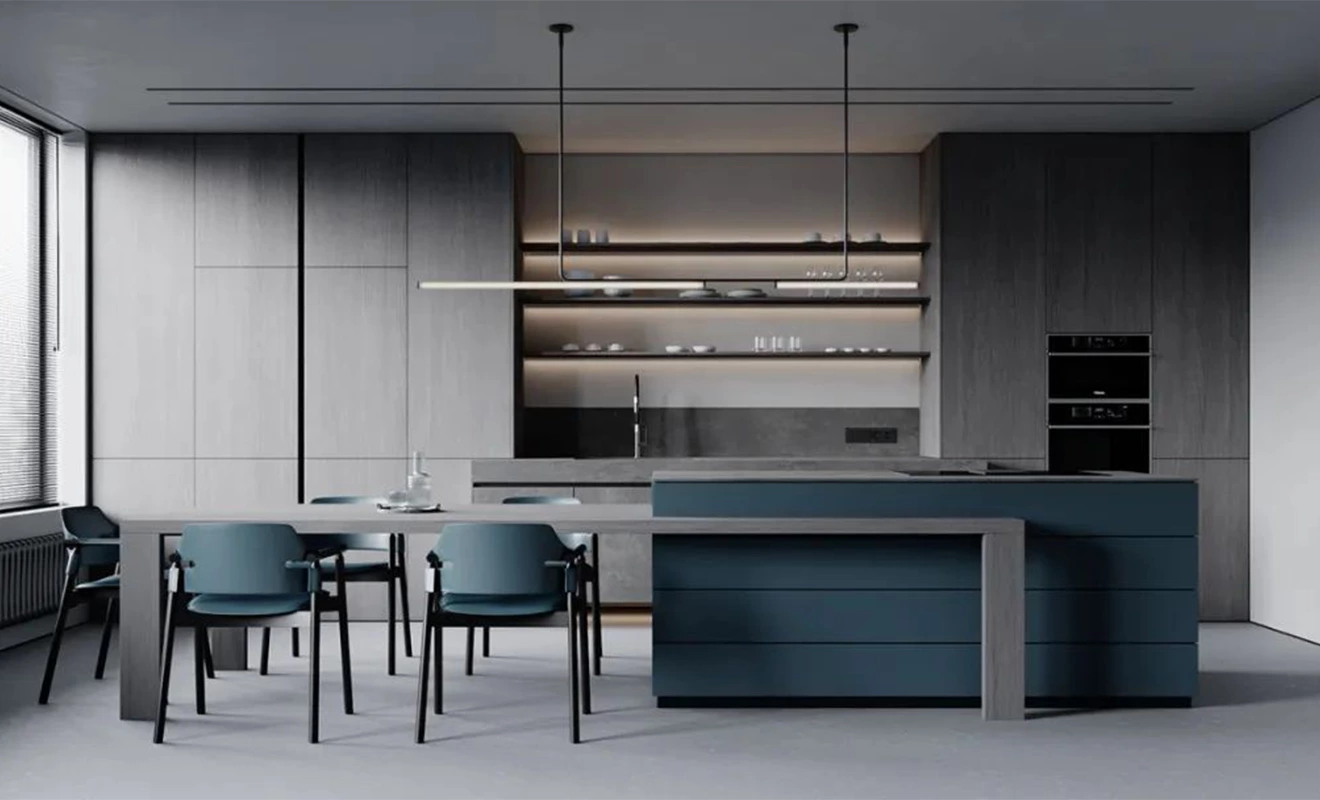
Built-in Banquette
Not every island has to stand alone.Designers are letting the island extend into a built-in banquette—a move that instantly softens the geometry of the kitchen and brings a touch of café charm to everyday life. Picture a wraparound upholstered seat hugging one side of the island, paired with a round or oval table for easy flow. The banquette makes the kitchen feel more like a living space than a workspace; it invites lazy breakfasts, kids’ homework sessions, and evening chats that linger long after the plates are cleared. Functionally, it also saves space—no need for a separate dining area—and visually, it adds warmth and intimacy through texture, fabric, and shape.

